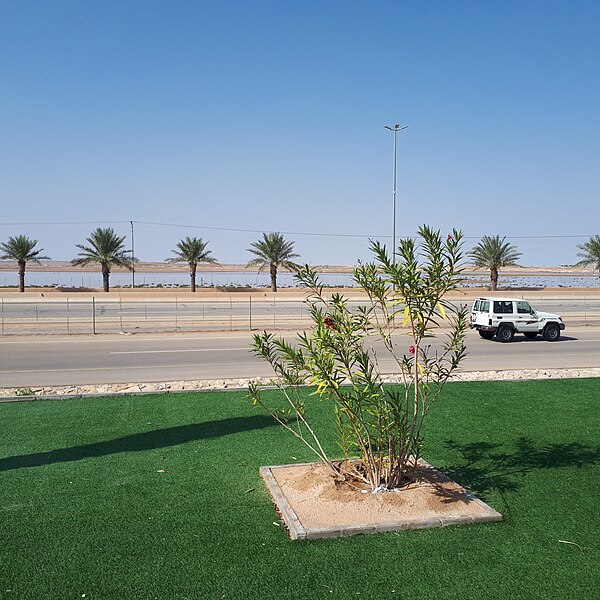Geography of Saudi Arabia
The Kingdom of Saudi Arabia is a country situated in West Asia, the largest country on the Arabian Peninsula, bordering the Persian Gulf and the Red Sea. Its extensive coastlines provide great leverage on shipping through the Persian Gulf and the Suez Canal. The kingdom occupies 80% of the Arabian Peninsula. Most of the country's boundaries with the United Arab Emirates (UAE), Oman, and the Republic of Yemen are undefined, so the exact size of the country remains unknown. The Saudi government estimate is at 2,217,949 square kilometres, while other reputable estimates vary between 2,149,690 and 2,240,000 sq. kilometres. Less than 7% of the total area is suitable for cultivation, and in the early 1960s, population distribution varied greatly among the towns of the eastern and western coastal areas, the densely populated interior oases, and the vast, almost empty deserts.
Geography of Saudi Arabia
Saudi Arabia physical features
Harrat al Birk volcanic field.
arean with shallow lakes in the Qasim region
Saudi Arabia, officially the Kingdom of Saudi Arabia (KSA), is a country in West Asia and the Middle East. It covers the bulk of the Arabian Peninsula and has a land area of about 2150000 km2, making it the fifth-largest country in Asia and the largest in the Middle East. It is bordered by the Red Sea to the west; Jordan, Iraq, and Kuwait to the north; the Persian Gulf, Qatar and the United Arab Emirates to the east; Oman to the southeast; and Yemen to the south. Bahrain is an island country off its east coast. The Gulf of Aqaba in the northwest separates Saudi Arabia from Egypt and Israel. Saudi Arabia is the only country with a coastline along both the Red Sea and the Persian Gulf, and most of its terrain consists of arid desert, lowland, steppe, and mountains. The capital and largest city is Riyadh; the kingdom also hosts Islam's two holiest cities of Mecca and Medina.

Anthropomorphic stela (4th millennium BC), sandstone, 57x27 cm, from El-Maakir-Qaryat al-Kaafa (National Museum of Saudi Arabia, Riyadh)
The "Worshipping Servant" statue (2500 BC), above one metre (3 ft 3 in) in height, is much taller than any possible Mesopotamian or Harappan models. Photo courtesy of the National Museum of Korea.
Qaṣr Al-Farīd, the largest of the 131 rock-cut monumental tombs built from the 1st century BC to the 1st century AD, with their elaborately ornamented façades, at the extensive ancient Nabatean archaeological site of Hegra located in the area of Al-'Ula within Al Madinah Region in the Hejaz. A UNESCO World Heritage Site since 2008.
Colossal statue from Al-'Ula in the Hejaz (6th–4th century BC), it followed the standardized artistic sculpting of the Lihyanite kingdom. The original statue was painted with white. (Louvre Museum, Paris)








